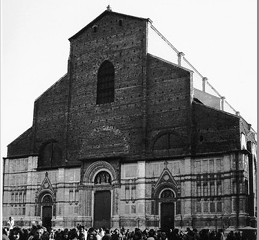Bologna

Significance within the Decameron:
Stories:
Pampinea: First Day, Tenth Tale (Master Alberto and his analogy to the leek)
Filostrato: Second Day, Second Tale (Rinaldo d'Asti is shown hospitality by a widow)
Panfilo: Seventh Day, Seventh Tale (How Madonna Beatrice obtains Lodovico)
Lauretta: Eighth Day, Ninth Tale (Bruno and Buffalmacco joke with and then throw a Bolognese physician into a ditch)
Lauretta: Tenth Day, Fourth Tale (the tale of the lover who revives the lady in the tomb)
Dioneo: Tenth Day, Tenth Tale (Marquis of Saluzzo tests his wife)
Pertinent data:
Political and Cultural Aspects: The University of Bologna (L'universita' delgi studi di Bologna) was the oldest and one of the most important centers of learning in all of Europe during the Middle Ages and the Renaissance. It was founded in 11th century and became a model for other universities. The medieval university was primarily student run, with the students deciding whether to keep professors or fire them. The school was famous for its study of canon law. To go to the University of Bologna and study canon law was a significant achievement.
Medieval History:After being subject to the Greek exarchate of Ravenna in the 6th century, Bologna was passed to the papacy. After a feudal period, the city became a free commune after the emperor recognized its rights in the early 12th century. The conflict between the Guelfs and Ghibellines led to the domination by a series of signori like the Pepoli, Visconti, and Bentivoglio.
(J. K., J. Q. & N. F.)